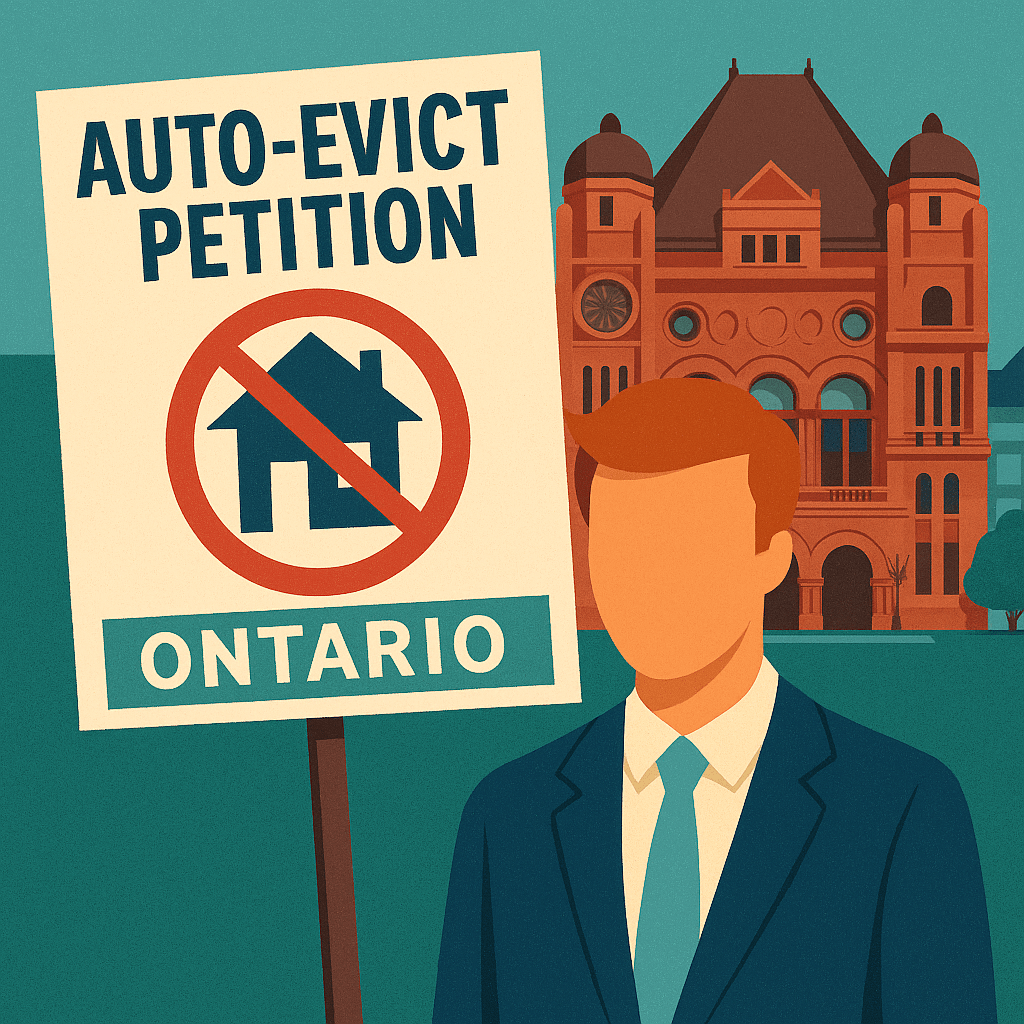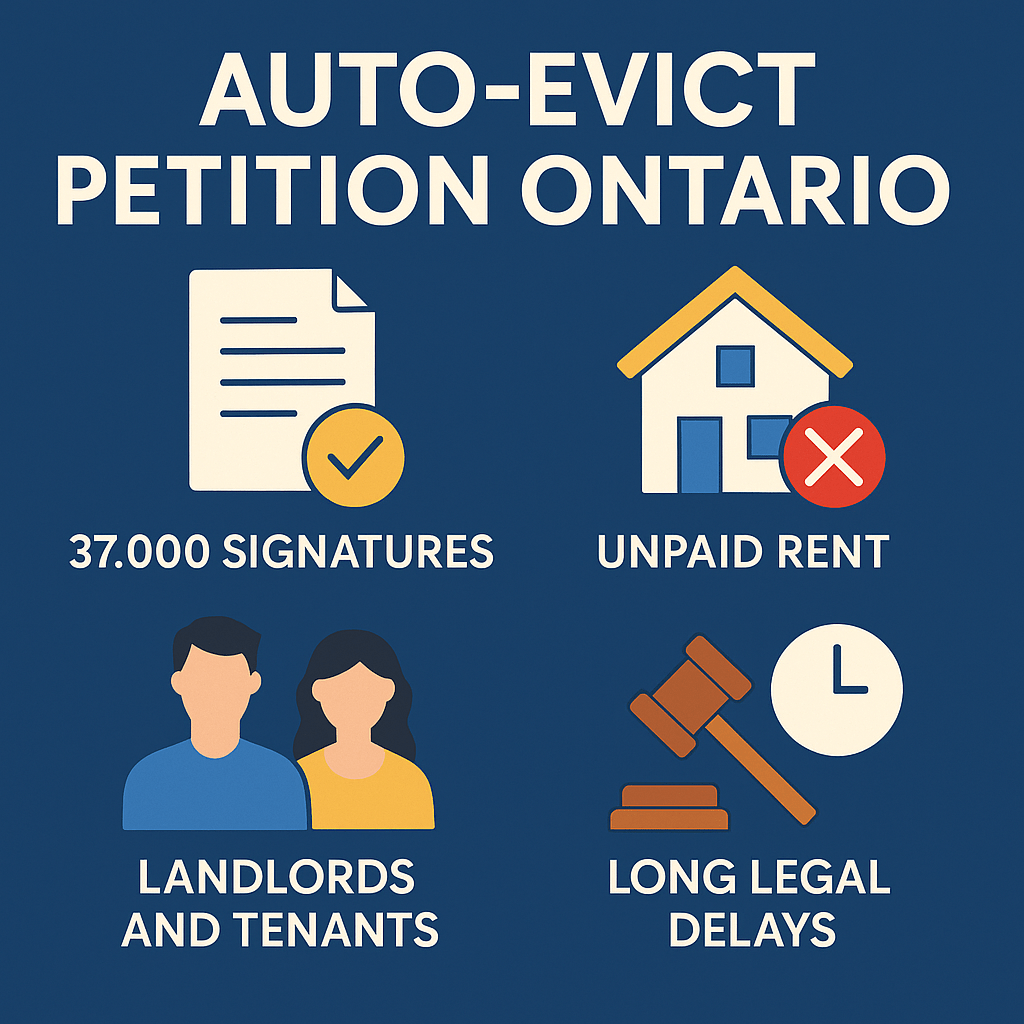Auto-Evict Petition Ontario: What It Meant and What’s Next

In This Article:
⚖️ What the Auto-Evict Petition in Ontario Was About
In early 2024, the auto-evict petition Ontario landlords and tenants supported got a lot of attention. More than 37,000 people signed it, calling for change in how long it takes to remove non-paying tenants in Ontario.
The petition wasn’t about unfair evictions. It asked for a faster, more balanced process to deal with rent that isn’t being paid. At the time, landlords were waiting months — even years — for a Landlord and Tenant Board (LTB) hearing.
📊 The Backlog That Sparked the Petition
In February 2024, the LTB reported over 53,000 unresolved cases. Around 90% were from landlords, and almost 41% of those were related to unpaid rent.
That means nearly 20,000 homes were tied up in disputes — while good tenants couldn’t find a place to live.
Ontario’s housing crisis isn’t just about not enough homes. It’s also about good housing being stuck in legal limbo.
📈 Want to see how your property stacks up? Try our Ontario Cap Rate Calculator.
🚪 Why the Petition Mattered for Landlords and Tenants
The petition looked for a solution like those in British Columbia and New Brunswick, where a “no pay, no stay” rule helps remove tenants who don’t pay — quickly and fairly.
Ontario had a similar rule until the early 2000s. It helped return homes to the market faster and made sure people were held accountable for rent.
📰 Global News coverage shows how delays are still hurting both landlords and renters.

💳 What “No Pay, No Stay” Actually Means
The idea is simple: if a tenant isn’t paying rent and has no legal reason, they shouldn’t be allowed to stay indefinitely.
In 2023, the federal government also supported rent reporting, which allows rental payments to help or hurt a person’s credit score — just like a credit card.
At Blue Anchor, we’ve been doing this for years. It helps:
- Landlords reduce missed payments
- Tenants build or rebuild their credit
- Newcomers create financial history in Canada
📘 Read more: Understanding Property Management Fees in Ontario
🏡 How Blue Anchor Took Action
While others waited for new rules, we made changes. Here’s how we protected our clients:
- In-person tenant screenings
- Rent collection with credit reporting
- Support for Ukrainian refugees and international students
- Helping tenants improve their finances with on-time rent history
Need help with bad tenants or late rent? Check our Full-Service Property Management plans built for Ontario landlords.
🔍 What Landlords Can Do in 2025
Even though the petition didn’t become law, it pushed the issue into the spotlight. The LTB added new adjudicators and tech tools — but delays still happen.
You don’t have to wait for the system to change.
Take action by:
- Contacting your MPP
- Using rent reporting tools
- Working with property managers who screen properly and act quickly
At Blue Anchor, we don’t wait for government changes. We act now — using smart tools, personal screening, and fair policies to help Ontario landlords succeed.
📞 Ready to rent smarter? Contact us today to learn how we protect your investment and support good tenants.
Stay informed. Stay secure. Stay successful — with Blue Anchor.
